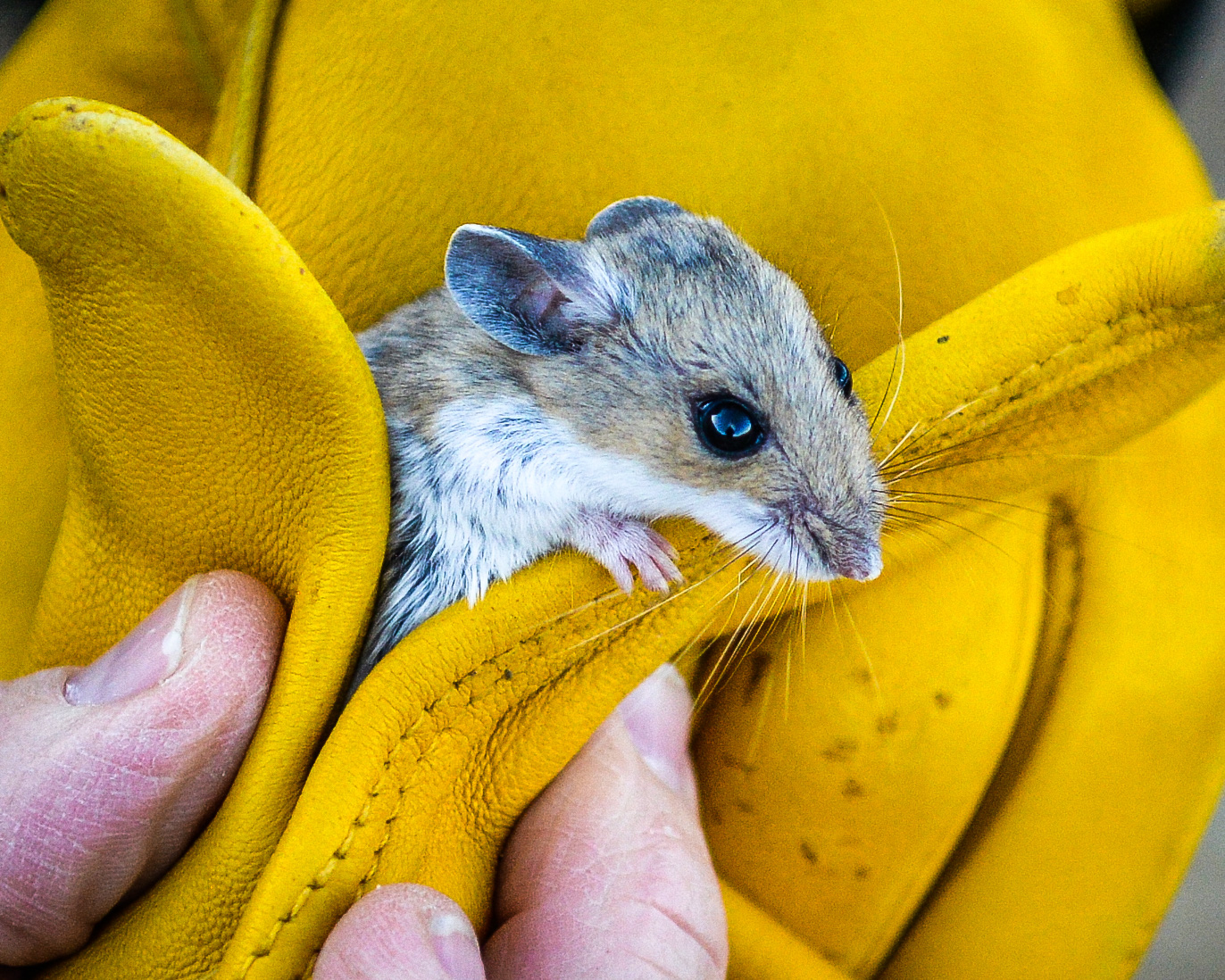
Habitat Notes for California Desert Rodents
This note shares data from a recent article in the Journal of Mammalogy titled “Small mammal assemblage composition and habitat associations across an elevational gradient in southern California” (Aviv Karasov-Olson and Douglas Kelt, 2019). It is not my work: I just pass on their findings.
The authors surveyed small mammals in the Southern California desert and the results can help visiting mammal watchers know what to expect when seeking new species. In their study, 4,800 trap-nights yielded 1,097 captures of 713 individuals. Their results clearly show habitat preferences for visually-similar species and hence can help non-professionals observe desired California rodents.
The team worked at a non-public site called Deep Canyon. Owned and managed by the University of California, the Boyd Deep Canyon Desert Research Center is located west of Palm Desert, in the mountains between Palm Springs and the Salton Sea. The team covered a broad vertical transect, from near sea-level to the top of the Santa Rosa Mountains (2,657 meters a.s.l.).
As a research and study area, the site is not open to the general public. Highway 74 however goes very near the reserve from the low desert to the pines at Idyllwild and provides access to comparable habitat. The data summarized here should be applicable to most nearby public land.
Going from low to high, habitat assemblages were separated by the authors into 8 categories: saltbush, creosote, cholla, rocky slope, agave-ocotillo, pinion-juniper, chaparral, coniferous forest. I have summarized their findings below.
In posting this, I make no comment about whether or not counting rodents pads one’s list, whether or not it is ethical to use Sherman traps without permits and formal training, and whether or not field work would be easier if one had a cadre of eager graduate students at one’s immediate disposal.
I will suggest that it would be good ethics to include cotton wool as bedding in live traps and that traps should be cleaned with beach between sessions, so you are not an inadvertent disease vector.
Here is what was where.
Chaetodipus fallax / San Diego Pocket Mouse (2 agave-ocotillo, 89 pinon-juniper, 4 chaparral)
Chaetodipus formosus / Long-tailed Pocket Mouse (36 creosote, 52 cholla, 42 rocky slope, 77 agave-ocotillo)
Chaetodipus penicillatus / Desert Pocket Mouse (79 saltbush, 8 cholla, 1 rocky slope)
Chaetodipus rudinoris / Baja Pocket Mouse (9 creosote, 5 cholla, 12 rocky slope, 1 agave-ocotillo)
Chaetodipus spinatus / Spiny Pocket Mouse (1 creosote, 3 cholla, 7 rocky slope, 53 agave-ocotillo)
Perognathus longimembris / Little Pocket Mouse (30 pinon-juniper)
Dipodomys agilis / Agile Kangaroo-rat (2 pinon-juniper)
Dipodomys merriami / Merriam’s Kangaroo-rat (3 saltbush, 22 creosote, 10 cholla, 6 pinon-juniper)
Neotoma lepida / Desert Woodrat (1 cholla, 6 rocky slope, 13 agave-ocotillo, 14 chaparral, 2 coniferous forest)
Onychomys torridus / Southern Grasshopper Mouse (1 creosote)
Peromyscus boylii / Brush Mouse (13 chaparral)
Peromyscus crinitus / Canyon Mouse (2 creosote, 2 cholla, 14 rocky slope)
Peromyscus eremicus / Cactus Mouse (14 cholla, 10 rocky slope, 16 agave-ocotillo, 16 pinon-juniper, 8 chaparral)
Peromyscus truei / Pinyon Mouse (6 chaparral, 20 coniferous forest)
Good luck and good hunting. / Charles Hood, Palmdale, California
Leave a Reply
You must be logged in to post a comment.


Clive R Barlow
What bait was used and was it the same bait throughout the study ?